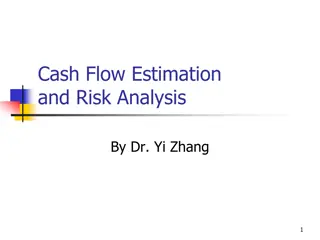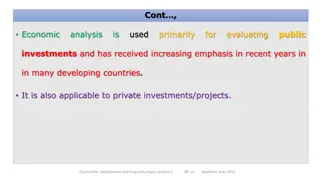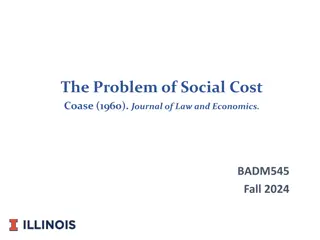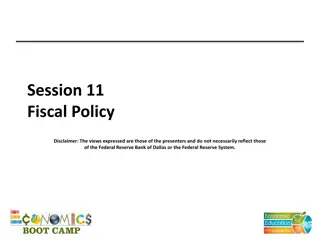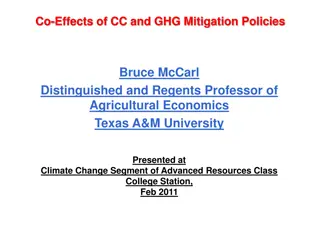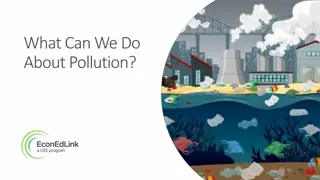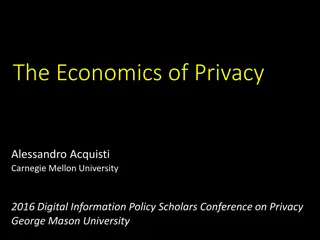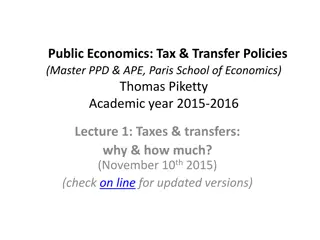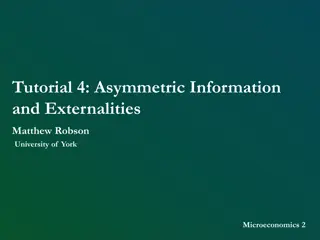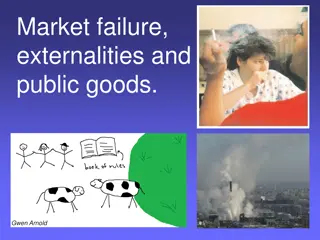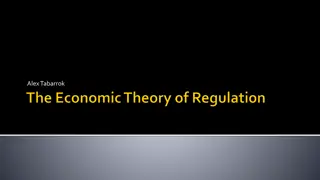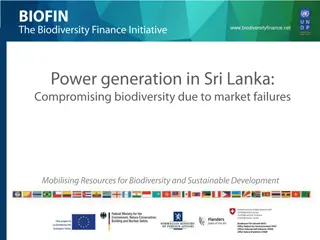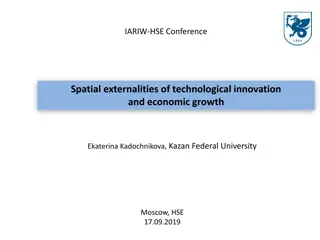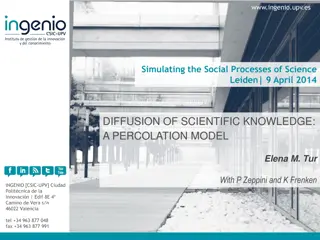Cash Flow Estimation and Risk Analysis Overview
This content delves into the principles of cash flow estimation and risk analysis in project evaluation. It covers learning objectives, incremental cash flows, treatment of financing costs, sunk costs, opportunity costs, and externalities in financial decision-making. Understanding these concepts is
1 views • 35 slides
Economic Analysis for Development Planning and Project Evaluation
Economic analysis plays a crucial role in evaluating both public and private investments, with a focus on identifying costs and benefits that may not always be captured in financial analyses. Externalities, such as infrastructure costs and benefits like flood control, are considered in economic asse
0 views • 68 slides
Decentralized Policies and Liability Laws in Environmental Protection
Explore the concept of decentralized policies in managing environmental pollution, focusing on liability laws, property rights, and voluntary actions. Discover how decentralized approaches offer advantages in addressing environmental externalities and how liability laws can change incentives for pol
1 views • 37 slides
The Problem of Social Cost: Coase's Analysis and Revisions
Coase (1960) revisited Pigou's (1920) approach on harmful actions and externalities, emphasizing the reciprocal nature of the problem. He proposed considering social net products alongside private products, emphasizing the importance of rights and efficient resource allocation. This critical analysi
0 views • 12 slides
Overview of Fiscal Policy and Market Failures
Learn about fiscal policy decisions and their economic impact at different levels, understand the basics of a free enterprise system, and explore concepts like government expenditures, taxation, externalities, and potential market failures. Dive into categorizing goods based on rival consumption and
0 views • 39 slides
Understanding Co-Effects of Climate Change and GHG Mitigation Policies
Explore the interplay between climate change and greenhouse gas mitigation policies, including their economic perspectives, measurement methods, and government interventions. Discover how these policies generate externalities and impact various sectors such as agriculture, forestry, and energy. Dive
0 views • 33 slides
Strategies to Address Pollution and Negative Externalities
Exploring the concept of negative externalities, the text discusses how markets interact to allocate resources and the ethical considerations involved in balancing economic activities with pollution reduction. It presents three effective ways to mitigate negative externalities, such as command and c
0 views • 24 slides
The Economics of Privacy: Evolution and Implications
The field of privacy economics has evolved over the years, from concealing information to exchanging it for economic benefits. Early theories by Posner and Stigler highlighted the redistributive nature of privacy decisions. Varian's work in the mid-1990s emphasized the importance of property rights
0 views • 49 slides
Understanding Tax and Transfer Policies in Public Economics
Exploring the rationale behind taxes and transfers in public economics, this lecture delves into the objectives such as public good provision, redistribution, addressing externalities, and stabilization. It also discusses the fundamentals of welfare theorems and presents basic facts about taxes and
0 views • 10 slides
The Value of a Millisecond: Assessing Regulatory Interventions in Financial Markets
The discussion explores the challenges in evaluating regulatory interventions due to overlapping issues and externalities. Authors utilize innovative methodologies to study the impact of speed bumps on trading activities. The assessment highlights the discriminatory nature of speed bumps and their s
0 views • 10 slides
Understanding Sin Taxes in State and Local Public Finance
Sin taxes are levied on products with negative externalities, such as alcohol, tobacco, and gambling. While they generate revenue and aim to discourage consumption, their long-term revenue potential is limited. Policy changes may be needed to strengthen sin tax revenue growth and prevent tax evasion
0 views • 54 slides
Understanding Asymmetric Information and Externalities in Microeconomics
Explore the concepts of adverse selection, market inefficiency, signaling, and moral hazard arising from asymmetric information in microeconomics. Delve into scenarios like the Market for Lemons and health insurance to grasp how information deficiencies impact economic outcomes. Additionally, analyz
0 views • 22 slides
Understanding Sin Taxes in State and Local Public Finance
Sin taxes are imposed on products with perceived negative externalities in society, such as alcohol, tobacco, and gambling. While they generate some revenue for governments, there are limitations and potential drawbacks, including uncertain long-term revenue prospects and the risk of decreased consu
0 views • 51 slides
Understanding Market Failure, Externalities, and Public Goods
Market failure occurs when the equilibrium is not Pareto efficient, often due to externalities where the actions of individuals or firms impact others without compensation. Positive externalities like bee pollination and negative externalities such as air pollution from power plants are examples. By
0 views • 39 slides
Understanding Public Goods and Market Imperfections
Public goods are non-rival and non-excludable in consumption, posing challenges for free market provision due to free-riding. Market imperfections like monopoly and externalities deviate from perfect competition assumptions, impacting economic efficiency. Government intervention can address public g
0 views • 23 slides
Insights on Regulation, Market Failures, and Capture Theory
Disciplined monopolies internalize externalities and enhance social welfare, but small groups with large potential benefits often drive regulation for self-interest. Capture theory suggests regulatory capture by firms over time, leading to favoritism and high rates of return for regulated industries
0 views • 23 slides
Challenges and Opportunities in Sri Lanka's Energy Sector
Sri Lanka's energy landscape faces various challenges including reliance on coal, exhausted hydro power capacity, and low efficiency in power generation. Major issues involve considering coal without accounting for externalities, low hydro plant factors, and government vs. private ownership. Improvi
0 views • 16 slides
Spatial Externalities of Technological Innovation and Economic Growth: Empirical Study
This study explores the spatial externalities of technological innovation and economic growth, focusing on the convergence of growth rates in different regions. It delves into the impact of knowledge capital, patents, human capital, and internet development on regional growth rates. Various theories
0 views • 26 slides
Social Processes of Science: A Percolation Model
Exploring the diffusion of scientific knowledge through social networks, this study investigates the impact of social pressure and assortativity on the spread of ideas. With a focus on social dynamics and network structures, it delves into how local interactions influence global diffusion patterns.
0 views • 24 slides
Macroeconomic Policy Framework for Structural Transformation of African Economies
Structural transformation is essential for the development of African economies, involving shifts towards higher productive activities and inclusive growth. The process requires purposeful efforts to create articulated economies with coordinated economic activities and positive externalities. Emphas
0 views • 13 slides
